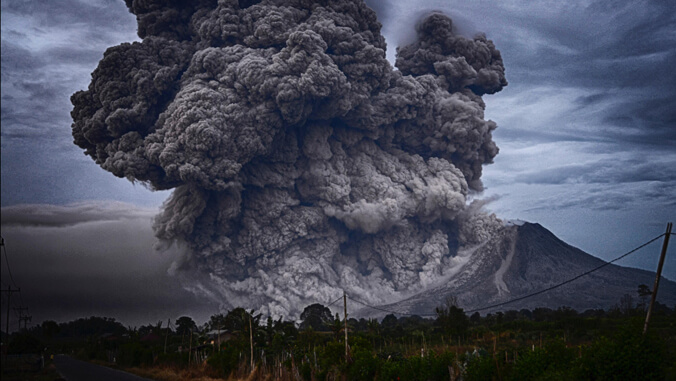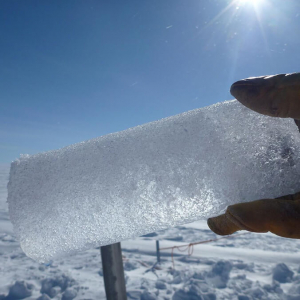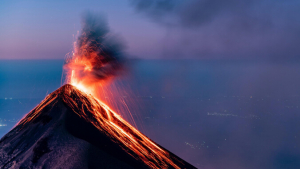El Niño, La Niña multi-year events could become more common | University of Hawaiʻi System News
El Niño, La Niña multi-year events could become more common ... University of Hawaii


The Changing Pacific Walker Circulation and its Implications for Climate Events

The atmospheric flow over the tropical Pacific Ocean, known as the “Pacific Walker Circulation,” is undergoing changes that have significant implications for El Niño and La Niña events. These events, which represent the cold and warm states of the tropical Pacific, may become more frequent and prolonged due to these changes. This can lead to increased risks of drought, fires, heavy rains, and floods, all of which have serious consequences for communities worldwide.

The Significance of the Pacific Walker Circulation
The Pacific Walker Circulation has a disproportionate impact on global climate patterns. Understanding how it responds to factors such as volcanic eruptions, man-made aerosols, and greenhouse gas emissions is crucial for accurately predicting climate variability and projecting future climate changes in Hawaii and worldwide. The Sustainable Development Goals (SDGs) emphasize the importance of addressing climate change and its impacts, making it essential to study and comprehend the behavior of the Pacific Walker Circulation.
Research Methodology and Findings
An international team of researchers utilized data from various sources, including ice cores, trees, lakes, corals, and caves, to investigate the weather and climate patterns of the Pacific Ocean over the past 800 years. By comparing the behavior of the Pacific Walker Circulation before and after the industrial era, they were able to identify significant changes.
The study revealed that the transition time between El Niño-like and La Niña-like phases of the Pacific Walker Circulation has slowed down in recent years. This slowdown indicates a shift in the year-to-year behavior of the circulation, potentially leading to more persistent El Niño and La Niña events.
The Role of Volcanic Eruptions

Volcanic eruptions have the potential to impact global climate, but not all eruptions have the same effect. Previous research has shown that strong tropical volcanic eruptions tend to cool the Earth’s climate. The current study found that volcanic eruptions can weaken the Pacific Walker Circulation, resembling the effects of El Niño events. This consistent atmospheric response to volcanic eruptions highlights the importance of considering volcanic activity when studying climate patterns.
Implications and Future Research
Understanding the impact of climate change on the Pacific Walker Circulation is crucial for communities across the Pacific and beyond. By comprehending the changes in this circulation system, communities can better prepare for the challenges they may face in the coming decades. The findings of this study provide a long-term context for understanding the behavior of the atmosphere-ocean system in the tropics, contributing to efforts to achieve the Sustainable Development Goals (SDGs) related to climate action and disaster resilience.
SDGs, Targets, and Indicators
-
SDG 13: Climate Action
- Target 13.1: Strengthen resilience and adaptive capacity to climate-related hazards and natural disasters
- Target 13.2: Integrate climate change measures into national policies, strategies, and planning
- Target 13.3: Improve education, awareness-raising, and human and institutional capacity on climate change mitigation, adaptation, impact reduction, and early warning
- Target 13.b: Promote mechanisms to raise capacity for planning and management in least developed countries and small island developing states
The article discusses the changing atmospheric flow over the tropical Pacific Ocean and its implications for El Niño and La Niña events. These events are climate-related hazards and natural disasters that can be influenced by climate change. The targets mentioned are relevant to building resilience, integrating climate change measures into policies, improving education and awareness, and promoting capacity building in small island developing states like Hawaii.
-
SDG 15: Life on Land
- Target 15.1: Ensure the conservation, restoration, and sustainable use of terrestrial and inland freshwater ecosystems and their services
- Target 15.2: Promote the sustainable management of all types of forests, halt deforestation, restore degraded forests, and substantially increase afforestation and reforestation globally
- Target 15.5: Take urgent and significant action to reduce the degradation of natural habitats, halt the loss of biodiversity, and protect and prevent the extinction of threatened species
The article mentions the use of data from ice cores, trees, lakes, corals, and caves to investigate Pacific Ocean weather and climate over the past 800 years. This data collection involves terrestrial and inland freshwater ecosystems. The targets mentioned are relevant to the conservation, restoration, and sustainable use of these ecosystems, as well as the protection of biodiversity.
| SDGs | Targets | Indicators |
|---|---|---|
| SDG 13: Climate Action | Target 13.1: Strengthen resilience and adaptive capacity to climate-related hazards and natural disasters | Implications of changing atmospheric flow for El Niño and La Niña events |
| SDG 13: Climate Action | Target 13.2: Integrate climate change measures into national policies, strategies, and planning | Impact of greenhouse gas emissions on the Pacific Walker Circulation |
| SDG 13: Climate Action | Target 13.3: Improve education, awareness-raising, and human and institutional capacity on climate change mitigation, adaptation, impact reduction, and early warning | Importance of understanding the Pacific Walker Circulation for predicting climate variability |
| SDG 13: Climate Action | Target 13.b: Promote mechanisms to raise capacity for planning and management in least developed countries and small island developing states | Relevance of the study to small island developing states like Hawaii |
| SDG 15: Life on Land | Target 15.1: Ensure the conservation, restoration, and sustainable use of terrestrial and inland freshwater ecosystems and their services | Use of data from ice cores, trees, lakes, corals, and caves to investigate Pacific Ocean weather and climate |
| SDG 15: Life on Land | Target 15.2: Promote the sustainable management of all types of forests, halt deforestation, restore degraded forests, and substantially increase afforestation and reforestation globally | N/A |
| SDG 15: Life on Land | Target 15.5: Take urgent and significant action to reduce the degradation of natural habitats, halt the loss of biodiversity, and protect and prevent the extinction of threatened species | N/A |
Behold! This splendid article springs forth from the wellspring of knowledge, shaped by a wondrous proprietary AI technology that delved into a vast ocean of data, illuminating the path towards the Sustainable Development Goals. Remember that all rights are reserved by SDG Investors LLC, empowering us to champion progress together.
Source: hawaii.edu

Join us, as fellow seekers of change, on a transformative journey at https://sdgtalks.ai/welcome, where you can become a member and actively contribute to shaping a brighter future.







